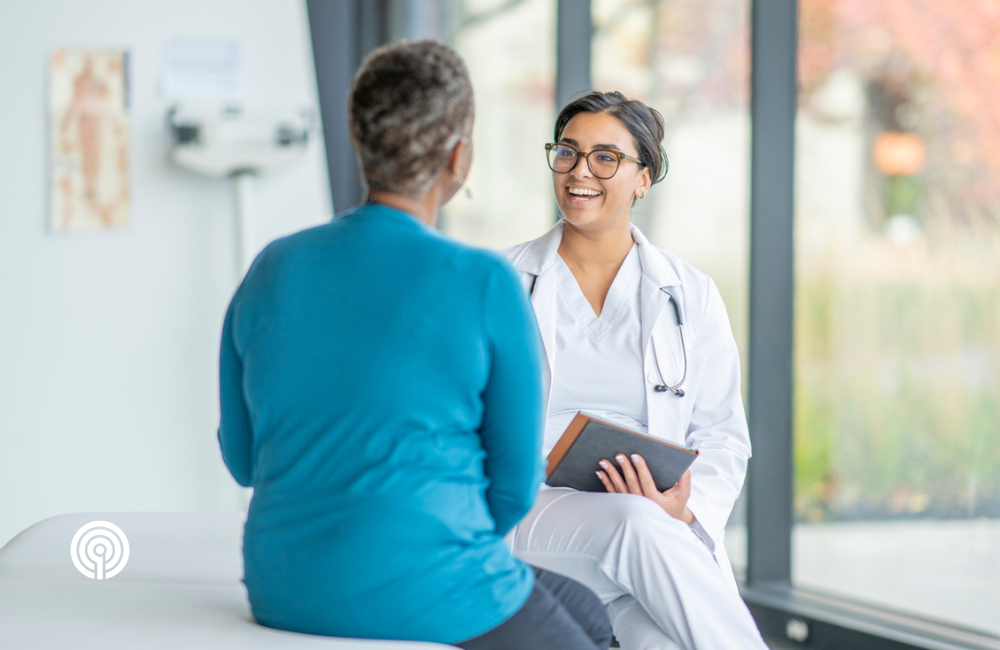
Relationships between patients and healthcare professionals are based on the same qualities necessary for any relationship to be successful. These include respect, good communication and, of course, trust. Trust can be defined as:
A firm belief in the reliability, truth, ability, and good intentions of someone or something
Ideally, patients trust that their healthcare professionals will do their best to take care of their health issues thoroughly and efficiently. Unfortunately, this is increasingly not the case. Mistrust in healthcare has been rising in the United States, particularly among patients of color, immigrants, and those of lower socioeconomic status.
In general, patients are more trusting of their healthcare professionals than of the healthcare system overall. As healthcare professionals, we can play a dual role of advocating for improvements in the healthcare system while also building trusting relationships with the patients we serve.
Among the many strategies to build patient trust, the following three habits can go a long way toward building strong relationships with the people in our care.
Active listening
Achieving mutual understanding, conveying empathy, and building trust in healthcare depends on good communication. While there are many aspects to good communication, a particularly fundamental skill is that of active listening.
Active listening is more than simply hearing your patient's words. It involves three essential components: preparation, mindful non-verbal communication, and reflection. Let's briefly review these steps.
Preparation reduces stress and allows care providers to be fully present in the moment. Taking time to review records ahead of time allows us to focus on the patient while they are talking. Performing a quick mental check-in is also helpful to clear our minds of judgments or opinions, and respond to our own emotions. For example, if we are feeling frustrated or stressed, it can be helpful to acknowledge it, take a few deep breaths, and intentionally work to keep those feelings out of the patient encounter.
Mindful non-verbal communication entails intentional use of your attention and non-verbal body language to encourage the patient to be open. When you are actively listening, you:
- Directly face the patient
- Use relaxed, open posture
- Lean towards the patient
- Maintain eye contact, if culturally appropriate
Reflection helps to clarify points that may be vague or non-specific and communicates your desire to know the patient's story. Reflection simply involves restating the patient's story in your own words and confirming that the patient agrees with your interpretation. When reflecting, it is best to avoid simply repeating the patient's words verbatim, but instead to paraphrase and summarize. For example, “So I heard you say that you are particularly concerned about diabetes because your father had some serious complications from that.”
Responding to the patient's concerns
Active listening naturally leads into the next habit for building patient trust in healthcare – responding to the patient’s concerns. In the example for reflection above, the patient reveals a particular concern about complications of diabetes. This opens the opportunity for focused attention to that concern. For example, “Let’s talk some more about your concern about complications of diabetes.” Regardless of whether or not this was the main purpose of the visit, if it is something important to the patient it should be addressed.
As healthcare professionals we often have an agenda that is important to us to get through in the visit. However, we need to remember that we are still there to provide a service to the patient, which includes addressing their concerns. If there is an important reason we are not able to do that, we should explain that thoughtfully to the patient.
Many patients become mistrustful of clinicians because they feel their concerns were not addressed. They later complain to their friends or family that “the doctor didn’t listen to me.” Establishing an agenda for the visit at the beginning can be very useful in that regard, as it will put at least some of the patient’s main concerns on the table and will give the clinician an opportunity to do the same.
Going the extra mile
Providing medical care is becoming more complex and time consuming. Healthcare professionals may complain about the seemingly endless list of notes to write and patient follow-up tasks to complete. We may naturally develop ways to expedite these tasks, which often translates to limiting contact with patients.
From the patient perspective, this can be experienced as waiting days or even weeks to get results of lab tests, having difficulty scheduling appointments, unanswered questions and other frustrations, which ultimately erode trust. A great way to build trust in healthcare is to choose opportune moments to go against the tendency to abbreviate, and instead “go the extra mile” for a patient. For example, if a patient is very anxious about a breast lump, it would be infinitely better to call back to let her know if her mammogram was as soon as the results are available, rather than simply following protocol of mailing a letter, which could take many days to arrive.
Recognizing that we cannot call every patient with normal test results the moment they are available, selecting the right moments to go the extra mile for a patient can be a game changer for trust. These efforts can include actions like scheduling an appointment relatively soon for a patient to check back about a condition, or completing a prior authorization quickly to make sure they are able to get a particular medication.
Even more impactful in the long run is to design effective systems that allow for this kind of efficient care to happen consistently. This is the goal of patient-centered healthcare systems. When they are working the way they should, it becomes much more easy, and natural, to build patient trust in healthcare.
If you are interested in learning more tactics for building patient trust in healthcare, take our ResCUE Model Course for Cross-Cultural Clinical Care.